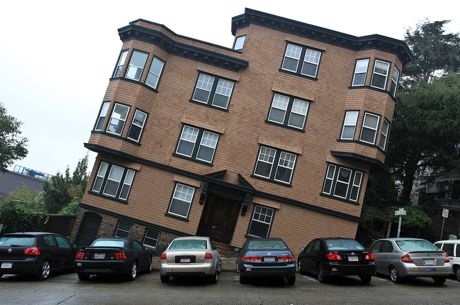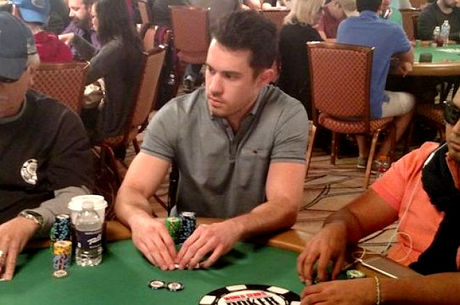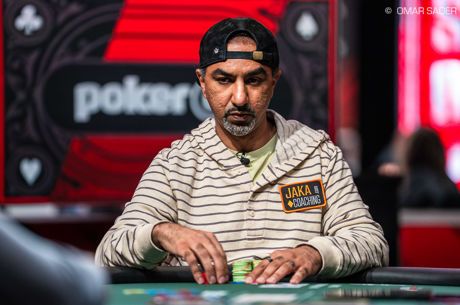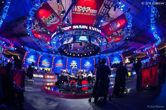Play Poker Without Looking at Your Cards? It Can Be Eye-Opening
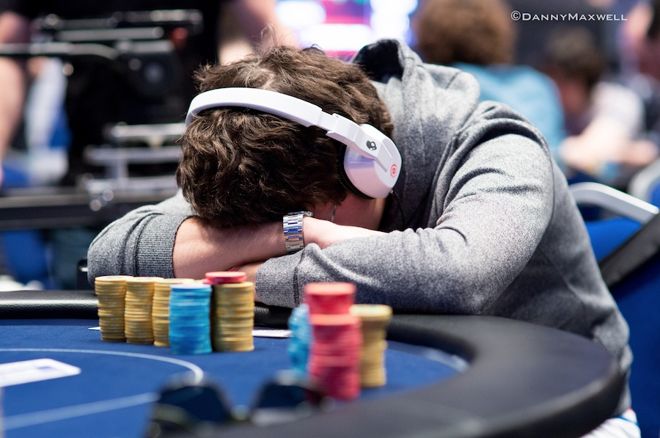
In no-limit hold'em tournaments, there's a long list of factors potentially relevant to how you're going to approach each hand. The list includes things like what stage the tournament is in (early, middle, late), the proximity to the money (far, near, already in), the structure, the styles and skill levels of the players at your table, and so on.
But when it comes to playing a given NLHE tournament hand, three factors tend to have relevance pretty much every time �� cards, chips, and position.
In poker, you're frequently considering your relative hand strength against what others might hold (or your range of possible hands versus others' ranges). You're also hopefully mindful of stack sizes and how they compare, especially in tournaments where chips equal survival. Your position at the table is relevant, too, with those enjoying later position having that important informational advantage as a hand plays out.
Here's a question for you: Of these three factors �� the cards, chips (or stack sizes), and players' positions �� which, would you say, is the least important? Set aside other factors, artificially remove "it depends" as an automatic response here for the moment, and just think about the question in the abstract.
In fact, let's make it a poll...
On the surface, it might seem like knowing your own hand �� and how it likely compares to others' hands �� is a piece of information you absolutely cannot do without at the poker table. After all, if poker is a partial information game, knowledge of your own hand represents the one bit of information you know you possess that no one else has. Have to value that, right?
Everyone can see each other's stacks and how they compare. Everyone can also see where the button is and know each player's position at the table, too. But a lot of times even though these things �� stacks and position �� are in plain sight, not everyone is necessarily "seeing" either.
In truth, a lot of players (especially less experienced ones) fail to appreciate how meaningful stack sizes and position really are in NLHE tournaments. Not coincidentally, they also tend to give too much significance to the meaning of their own cards, letting what they have in the hole exert too much influence over their actions in a given hand.
Don't Look Now: A "Blind Experiment" in Tournament Poker
Inspired by PokerNews strategy contributor Carlos Welch, I tried an experiment in a low buy-in tournament not long ago. I had in the back of my mind some tweets he had sent out while playing a tournament in which he tried to play hands without looking at his hole cards. No shinola.
For some, the idea recalls the much-repeated story of Annette Obrestad once winning a 180-player online sit-n-go several years ago without looking at her hole cards �� or, rather, only looking a single time during a key all-in decision, lifting the post-it note she'd placed over her avatar to peek at her cards only that once.
How do you play poker without looking at your cards? You focus on position and stacks, as well as on your opponents' betting patterns and styles. I tried it for the first several levels of the tournament, until the fast structure made everyone's stacks shallow enough that there wasn't much room any longer for a lot of postflop play.
If folded to in middle or late position, I'd open with a raise. As it happened I had some tight players in the seats to my left, and so doing that would usually at least "buy the button," and often would win me the blinds and antes, too. Sometimes I'd be called, then if checked to on the flop I'd continuation bet and many times take down those pots, too. Only now and then did I encounter resistance from a preflop three-bet, an early position player leading out on flops or turns, or a postflop check-raise of my c-bet.
Not being as bold as Obrestad or Welch, when an opponent woke up and starting raising or reraising me, I'd generally go ahead and take a look to find out my own hand strength and whether or not I could continue. But that happened less often than you'd think it would, and as a result I was able to accumulate chips fairly steadily, in most cases without having even seen what I'd been dealt.
What You See When You Don't Look
Gaining a few chips was good, of course. But more important to me was the information I was gaining when playing hands this way.
I realized pretty quickly I was paying a lot more attention to stack sizes and position than I might have otherwise. I always knew who was short-stacked, who was getting there, and who had enough chips to splash around if they wanted. I was also picking up a lot about other players' styles, pegging pretty quickly who was tight, who was loose, and which players were a little more savvy than others with the lines they took.
It was a little like walking around in a room with the lights off, finding yourself hearing more of the ambient noise and having to feel around in order not to bump into anything. Not being able to see, the other senses get more attention, and you surprisingly become aware of details you might not otherwise have noticed.
At times I also felt a little like I do when reporting on poker tournaments, when I'm standing beside a table as an observer. You'd be amazed at what you see when your vision isn't clouded by thoughts of that K?10? you just got dealt, causing you to daydream about flopping two pair or a big draw and as a result lose focus on what your opponents are doing (or what cards they might hold).
Getting Involved and Image Manipulation
I'll mention two other benefits from the experiment, ones that suggest it could help players who tend to be tighter and often find themselves folding their way through the first few levels of a tournament.
Playing according to position and stacks (and my opponents' tendencies) and not according to my starting hand meant I was involved fairly frequently from the start. It got my "poker mind" working from the initial orbit, and didn't allow me to lapse into those wandering thoughts that can happen if you're folding a lot and not part of the action. I was even locked in more closely during hands in which I wasn't involved.
The other benefit was the image I was creating with my preflop opens and frequent pressure on others. The funny thing was I knew the image was not at all an accurate one, given that I normally wouldn't be as loose and instead stick to a tight-aggressive game (and in fact did just that later on after having to stop not looking at not cards).
Not only that, there really was no correlation whatsoever between my hand strength and my actions, meaning if attentive players were making connections between what I was showing down and how I'd played hands, they weren't necessarily getting reliable information about how I would play hands going forward.
Conclusion
Perhaps you might attempt this experiment, too, in whatever way is comfortable for you to do so. I wouldn't necessarily advocate trying always to play tournaments without looking at your cards, but I would suggest finding ways to give more attention to other factors than your own hand strength.
Try not looking, even just for one hand. You might be surprised what you see.
Want to stay atop all the latest in the poker world? If so, make sure to get PokerNews updates on your social media outlets. Follow us on Twitter and find us on both Facebook and Google+!

